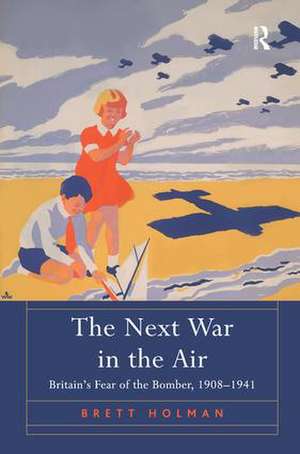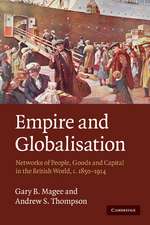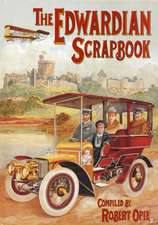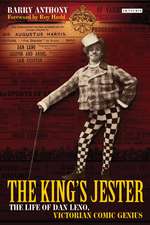The Next War in the Air: Britain's Fear of the Bomber, 1908–1941
Autor Brett Holmanen Limba Engleză Hardback – 18 iun 2014
| Toate formatele și edițiile | Preț | Express |
|---|---|---|
| Paperback (1) | 469.34 lei 6-8 săpt. | |
| Taylor & Francis – 6 ian 2017 | 469.34 lei 6-8 săpt. | |
| Hardback (1) | 1063.41 lei 6-8 săpt. | |
| Taylor & Francis – 18 iun 2014 | 1063.41 lei 6-8 săpt. |
Preț: 1063.41 lei
Preț vechi: 1296.84 lei
-18% Nou
Puncte Express: 1595
Preț estimativ în valută:
203.51€ • 212.20$ • 169.13£
203.51€ • 212.20$ • 169.13£
Carte tipărită la comandă
Livrare economică 21 martie-04 aprilie
Preluare comenzi: 021 569.72.76
Specificații
ISBN-13: 9781409447337
ISBN-10: 1409447332
Pagini: 302
Ilustrații: black & white illustrations
Dimensiuni: 156 x 234 x 18 mm
Greutate: 0.7 kg
Ediția:New ed.
Editura: Taylor & Francis
Colecția Routledge
Locul publicării:Oxford, United Kingdom
ISBN-10: 1409447332
Pagini: 302
Ilustrații: black & white illustrations
Dimensiuni: 156 x 234 x 18 mm
Greutate: 0.7 kg
Ediția:New ed.
Editura: Taylor & Francis
Colecția Routledge
Locul publicării:Oxford, United Kingdom
Cuprins
Contents: Introduction; Part I Threats: Constructing the knock-out blow, 1908-1931;The bomber ascendant, 1932-1941. Part II Responses: Living with the bomber: adaptation; The only defence is in offence: resistance; Wings over the world: negotiation. Part III Crises: Defence panics and air panics; The German air menace: 1913, 1922 and 1935; Barcelona, Canton and London: 1938; The Battles of London: 1917 and 1940; Conclusion; Bibliography; Index.
Notă biografică
Dr Brett Holman is lecturer in Modern European History in the School of Humanities at the University of New England, Armidale, Australia. He was awarded a PhD by the School of Historical Studies at the University of Melbourne. His research interests revolve around the place of aviation in British society and culture in the first half of the twentieth century. Primarily this means trying to understand how people responded to the threat of strategic bombing, the fabled 'knock-out blow from the air'. He is the author of several peer-reviewed publications, including articles on liberal internationalism and the international air force, the air panic of 1935, the reprisals debate during the Blitz, the convertibility of airliners into bombers, and most recently the Australian mystery aeroplane scare of 1918. Before becoming an academic, Dr Holman worked in IT at the University of Melbourne. Previously, he trained as an astrophysicist, obtaining a Master of Science by research from the School of Physics at the University of Melbourne in 1998.
Recenzii
'The great pleasure of his book is the cacophony of individual voices it entertains: a babble of speculation concerning the methods, up to and including a version of drone warfare, by which the world would very shortly be brought to an end.' London Review of Books ’...deserve[s] to be read.’ Aerospace
Descriere
In the early twentieth century, the technology of flight changed warfare. Writers argued that the main strategic risk to Britain was the possibility of a sudden, destructive aerial bombardment of Britain’s cities. For the first time, The Next War in the Air draws on archival documents and publications from 1908-1941 to reconstruct the concept of the knock-out blow as it was articulated in the public sphere, the reasons why it came to be so widely accepted, and the way it shaped the responses of the British public to some of the great issues facing them in the 1930s.















